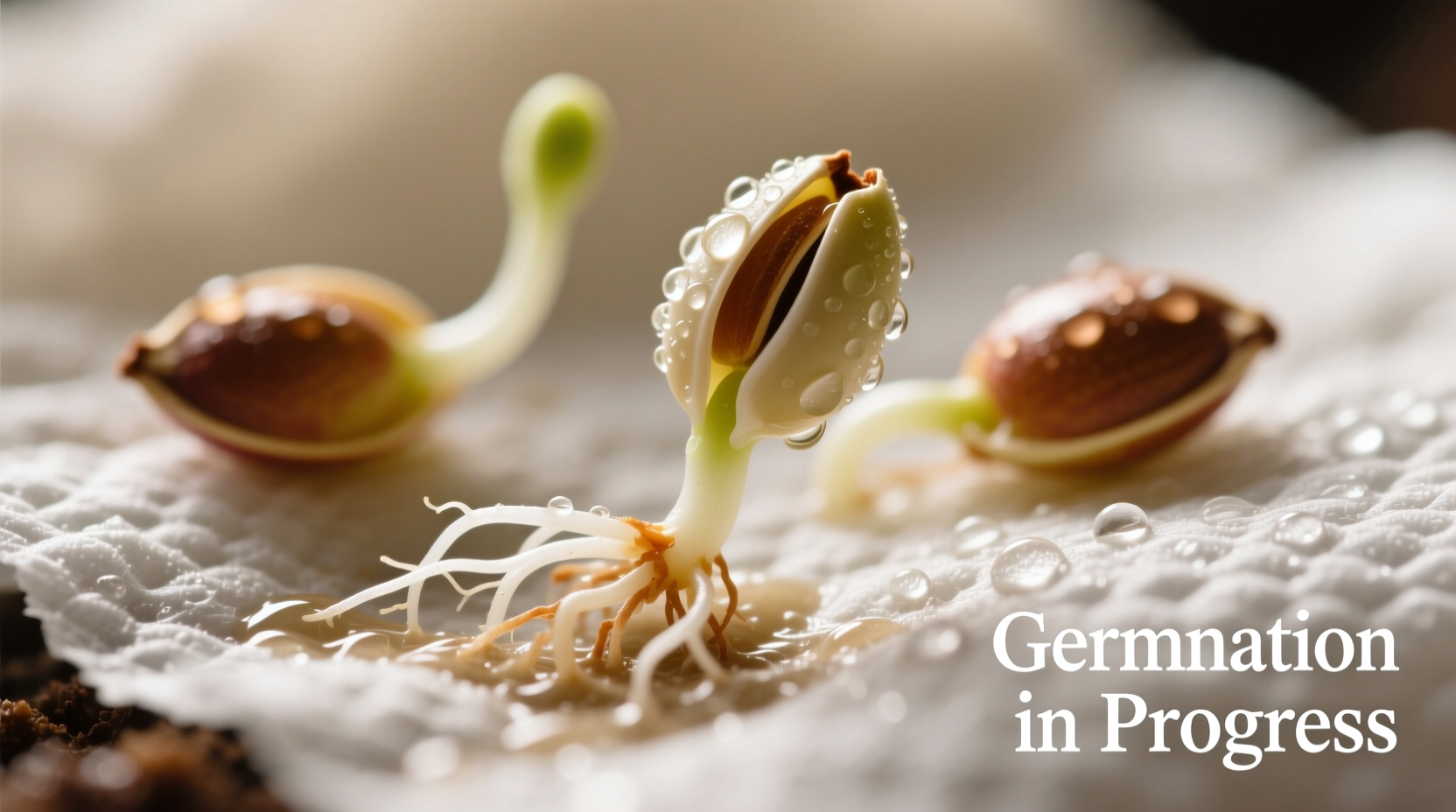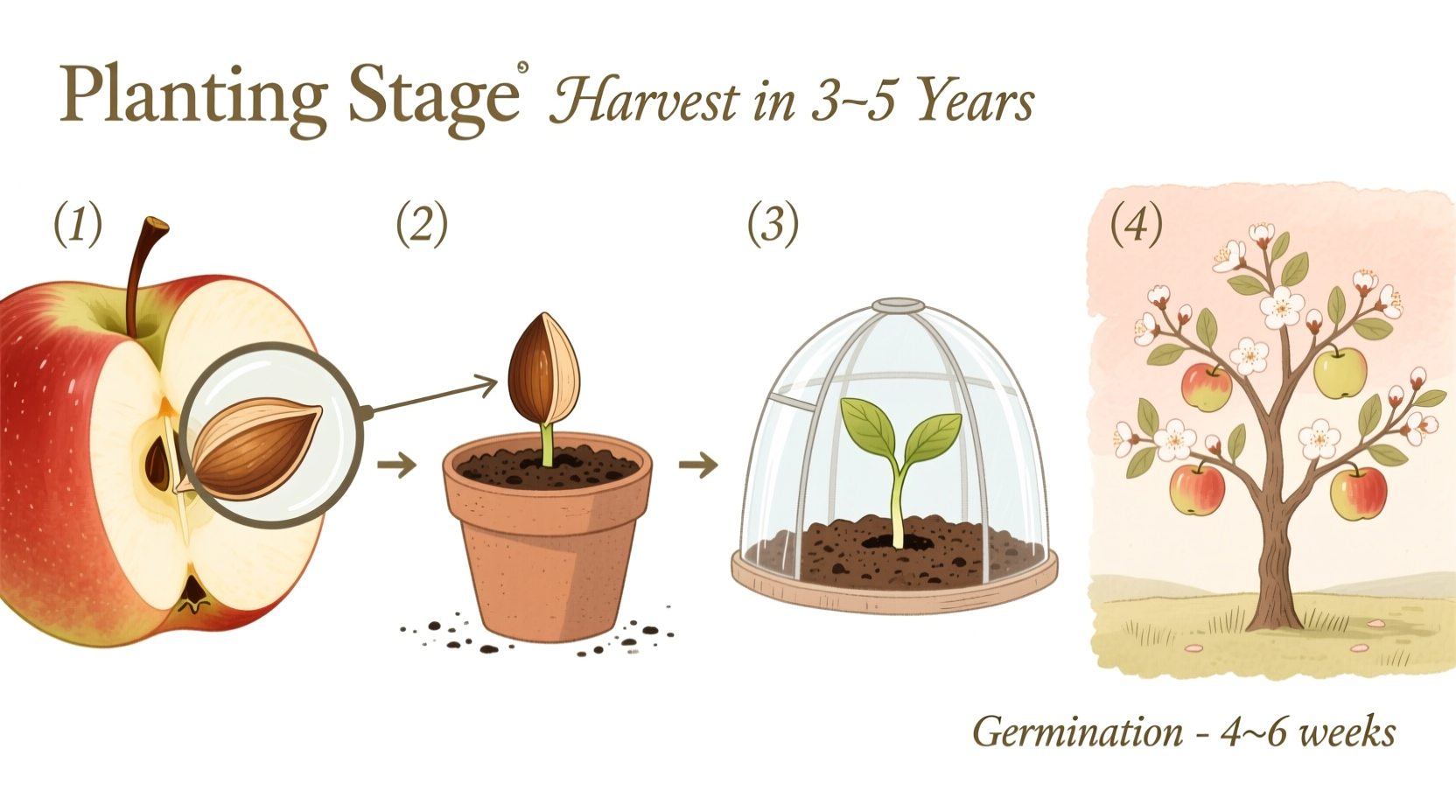Have you ever wondered how to grow apples from seed after enjoying a particularly delicious apple? While it's possible to grow apple trees from seeds, understanding the reality behind this process is crucial before you begin. Unlike many plants, apple seeds don't produce "true" to the parent fruit due to genetic diversity. This means your Honeycrisp apple seed won't grow another Honeycrisp tree—instead, you'll get a completely new apple variety with unpredictable characteristics.
Why Most Apple Growers Choose Grafting Over Seeds
Before diving into the seed-growing process, it's important to understand why growing apple trees from seed isn't recommended for consistent fruit production. Commercial orchards and serious home growers almost always use grafting because:
- Apple trees are highly heterozygous, meaning seeds produce genetically unique offspring
- Only about 1 in 80 seedling apples will be palatable
- Seed-grown trees take 7-10 years to fruit versus 2-4 years for grafted trees
- Grafting preserves desirable traits of named varieties
| Characteristic | Seed-Grown Trees | Grafted Trees |
|---|---|---|
| Time to fruit | 7-10 years | 2-4 years |
| Fruit quality | Unpredictable (often poor) | Identical to parent variety |
| Tree size | Full-sized (20-30ft) | Dwarf/semi-dwarf options available |
| Primary use | Rootstock development, breeding | Reliable fruit production |
The Realistic Timeline for Growing Apples from Seed
Understanding the apple seed germination timeline helps set proper expectations. This process spans multiple seasons:
- Fall (September-November): Collect mature seeds from ripe apples
- Cold Stratification (December-February): 90-120 days at 33-40°F (1-4°C)
- Spring (March-April): Plant stratified seeds indoors or in greenhouse
- First Growing Season: Seedlings reach 1-3 feet tall
- Years 2-5: Establish strong root system and structure
- Years 6-10: Potential first flowering and fruiting
According to research from the Oregon State University Extension Service, successful germination requires proper cold treatment that mimics winter conditions. Skipping this step results in near-zero germination rates for most apple varieties.

Step-by-Step Guide to Growing Apples from Seed
Follow these science-backed steps for the best chance of success when attempting to grow apples from seed at home:
Step 1: Select Quality Seeds
Choose seeds from fully ripe, disease-free apples. Organic apples work best since conventionally grown fruits sometimes come from trees treated with growth inhibitors. Remove seeds carefully and rinse off all pulp, which contains germination inhibitors. Remember that seeds from grocery store apples often come from triploid varieties with sterile seeds—check with your local nursery for viable seeds.
Step 2: Cold Stratification Process
This critical step simulates winter conditions needed for germination:
- Mix seeds with slightly moist peat moss or vermiculite
- Place in sealed plastic bag with small air hole
- Store in refrigerator (33-40°F / 1-4°C) for 90-120 days
- Check weekly for mold or premature sprouting
The USDA Agricultural Research Service confirms that proper stratification significantly increases germination rates for Malus domestica (apple) seeds. Without this cold period, most apple seeds remain dormant.
Step 3: Planting Your Stratified Seeds
When seeds develop small white roots (typically after 3 months):
- Plant 1/2 inch deep in well-draining potting mix
- Maintain consistent moisture (not soggy)
- Provide 12-16 hours of light daily
- Keep temperatures between 65-75°F (18-24°C)
Step 4: Transplanting and Care
Once seedlings reach 6-8 inches tall with several sets of leaves:
- Harden off gradually to outdoor conditions over 7-10 days
- Transplant to larger containers or prepared garden bed
- Choose sunny location with well-drained soil (pH 6.0-7.0)
- Water deeply but infrequently to encourage deep roots
- Apply balanced fertilizer after first true leaves develop
When Growing Apples from Seed Makes Sense
Despite the challenges, there are valid reasons to attempt growing apple trees from seeds:
- Educational projects: Excellent for teaching children about plant genetics and growth cycles
- Rootstock development: Many seedlings become quality rootstock for grafting desirable varieties
- Breeding new varieties: Professional breeders use seedlings to develop disease-resistant or climate-adapted apples
- Ornamental use: Seedling trees make attractive landscape features even without quality fruit
However, if your primary goal is reliable, high-quality apple production, grafting onto established rootstock remains the superior method. The Cornell University Department of Horticulture recommends that home growers seeking fruit production should purchase grafted trees from reputable nurseries.
Common Mistakes to Avoid
Learn from others' experiences when attempting to grow apples from seed successfully:
- Skip cold stratification: This is non-negotiable for apple seeds
- Plant too deep: Seeds need light for proper germination
- Overwater seedlings: Leads to damping-off disease
- Expect identical fruit: Understanding genetic diversity prevents disappointment
- Plant in poor soil: Apples need well-drained, slightly acidic soil
What to Do When Your Tree Finally Flowers
After 7-10 years of patience, your seedling tree will eventually flower. At this point:
- Hand-pollinate flowers using a small brush for better fruit set
- Thin developing fruit to prevent branch breakage
- Record observations about fruit characteristics
- Consider grafting scions onto the tree if fruit is desirable
- Share your unique apple discovery with local extension services
Remember that most seedling apples won't match commercial quality—this is part of the adventure! The University of Minnesota's apple breeding program has evaluated thousands of seedlings to develop just a handful of successful varieties like Honeycrisp.
Practical Alternatives for Home Growers
If your goal is home apple production rather than experimentation, consider these more reliable approaches:
- Purchase grafted dwarf or semi-dwarf trees (2-3 years to fruit)
- Learn basic grafting techniques using scions from existing trees
- Join a local pomological society for access to heirloom varieties
- Try air layering on established trees for faster results
For those committed to the seed-growing journey, treat it as a multi-year experiment rather than a reliable fruit production method. Document your process thoroughly—you might discover a new apple variety worthy of naming!











 浙公网安备
33010002000092号
浙公网安备
33010002000092号 浙B2-20120091-4
浙B2-20120091-4